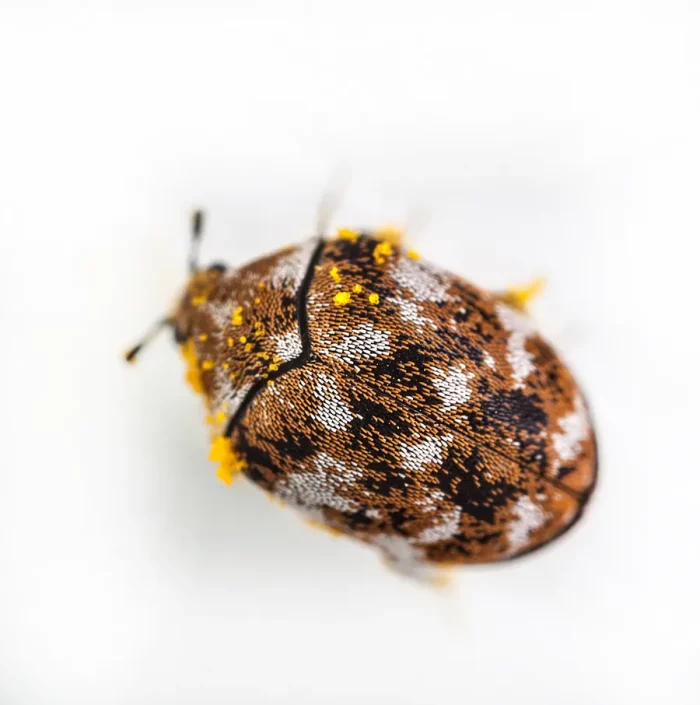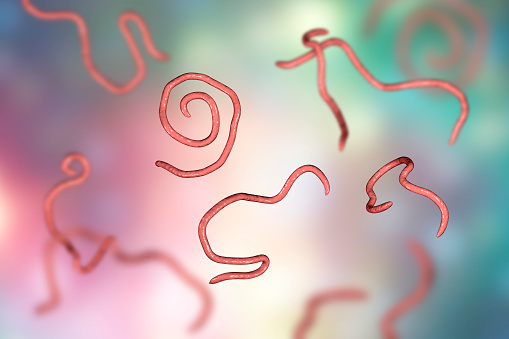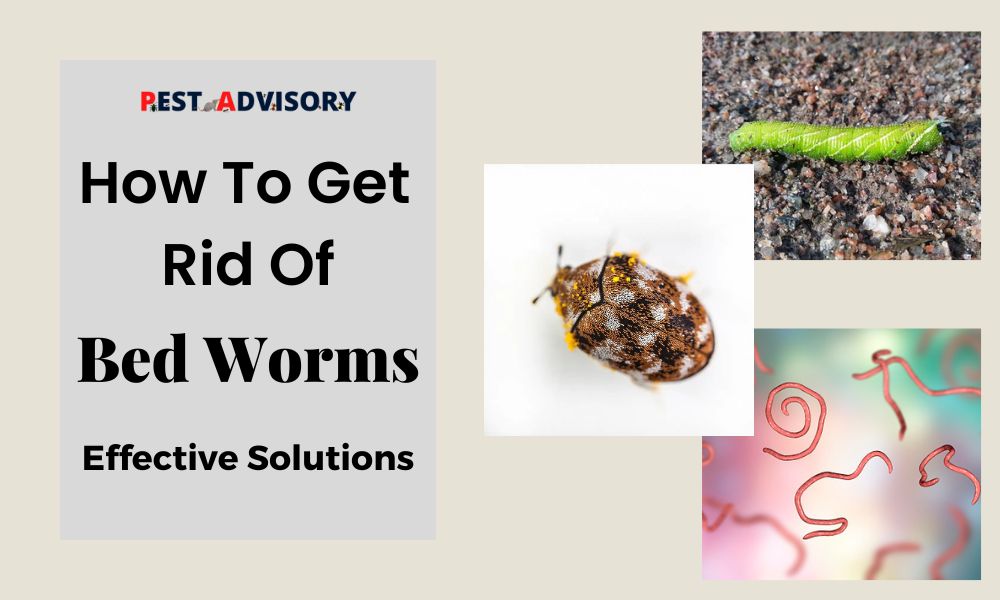Attention all sleepyheads! There’s nothing worse than settling into your bed, only to realize that you have unwelcome bed worms as roommates.
These pesky little creatures can make your nights restless and leave you feeling itchy and uncomfortable.
But fear not! We’ve compiled a list of effective ways to get rid of these unwelcome visitors once and for all.
Important Note: If you're tired of pests and want a reliable solution, then you should definitely consider seeking help from a professional pest control company. DIY solutions can be effective, but if you're dealing with a significant pest infestation, you don't want to rely solely on DIY methods. Pest control companies typically don't charge huge fees. You can fill out this form to receive free quotes from the top local pest control companies, and compare the quotes and see for yourself. Then, finally, your pest problems will be eliminated for good.
So sit back, relax, and get ready to reclaim your comfortable sleep experience with our top tips on how to get rid of bed worms.
Different Types of Bed Worms
Carpet Beetles
Carpet beetles are small tiny worms in the house, usually measuring 2-4 millimeters in length.
Additionally, they come in mottled patterns of brown, white, and yellow.
They have a hard shell and a rounded, oval-shaped body with a dense covering of fine hairs.
They are commonly found in carpets, rugs, upholstery, stored fabrics, and other areas with animal-based materials.
A carpet beetle larvae can live for years, while an adult carpet beetle usually lives for a few weeks to a few months.

Clothes Moths
Clothes moths are small, measuring approximately 6-8 millimeters in length.
They are usually pale beige or golden brown in color.
They have narrow wings with a wingspan of about 9-16 millimeters. The bug larvae are small, creamy-white caterpillars with a cylindrical shape.
Clothes moths infest stored clothing, carpets, upholstery, and other fabrics made from animal-based materials.
As adults, clothing moths live for a few weeks to a few months, while larvae can live for a few weeks to several years.
Pinworms
Pinworms are tiny, measuring only 8-13 millimeters in length.
They are usually white or cream-colored.
They have slender, thread-like bodies with pointed tails.
Pinworms are intestinal parasites that infest the human digestive tract, particularly the colon, and rectum.
The life cycle of pinworms takes about 2-6 weeks, with adult female pinworms laying eggs around the anus, causing intense itching and discomfort.

Bed Maggots
Small maggots can range from a few millimeters to a few centimeters in size.
They can be creamy white, yellow, or pale brown.
They are legless, soft-bodied larvae with a cylindrical shape and a tapered end.
Maggots are the larvae of flies and can be found in decaying organic matter, such as food waste, dead animals, or compost.
Fly maggots go through a number of developmental stages before pupating and developing into adult flies.

How to Get Rid of Bed Worms
Identify and Remove the Source
In order to get rid of little worms, the infestation’s cause must be located and eliminated.
This may involve thoroughly inspecting your home for signs of infestation, such as adult insects, larvae, eggs, or damage to fabrics, carpets, or stored food.
Once the source is identified, it should be removed or cleaned thoroughly to eliminate the tiny bed worms and prevent their further reproduction.
Vacuuming
By vacuuming regularly, you can remove bugs larvae, eggs, and adult insects from carpets, rugs, upholstery, and other infested areas.
Be sure to vacuum thoroughly, paying attention to cracks, crevices, and hidden areas where bed worms may be hiding.
Dispose of the vacuum bag or empty the dustbin properly to prevent re-infestation.
Laundering and Dry Cleaning
Washing infested fabrics, including clothing, bedding, and linens, in hot water can help kill bed worms and their eggs.
Dry cleaning is also effective in eliminating bed worms from delicate or dry-clean-only items.
Freezing
You can keep contaminated items like soft toys or delicate fabrics that cannot be washed or dry cleaned in a plastic bag and freeze them for a few days.
The extremely cold temperature will help kill the bed worms and their eggs.
Pest Control Products
There are various pest control products available in the market that are specifically formulated to control bed worms.
These may include insecticides, insect growth regulators, and mothballs.
Always read and follow the label instructions carefully, and use them in a well-ventilated area while taking appropriate safety precautions.
Sanitation and Prevention
Maintaining a clean and well-maintained home can prevent bed worm infestations. Regularly clean and vacuum carpets, rugs, and upholstery, and keep stored food in sealed containers.
Seal cracks and gaps in walls, windows, and doors to prevent entry points for bed worms. Avoid clutter, especially in dark and humid areas, as it can provide hiding places for bed worms.
Seek Professional Help
An infestation of bed worms that is difficult to control on your own should be handled by a professional pest control company.
Bed worm infestations can be recognized, eliminated, and prevented by pest control professionals with the necessary skills, knowledge, and equipment.
FAQ related to Bed Worms
How to Identify Bed Worms?
Based on distinctive traits like size, color, appearance, and habitat, bed worms can be distinguished from other parasites in bed.
For example, carpet beetle larvae are small, oval-shaped, and typically have a brown or black color with bristly hairs, while cloth moth larvae are creamy white and have a segmented body with a brown head.
The pinworm is a small, thread-like worm that is white or cream-colored, while the maggot is a legless fly larva.
Are Bed Worms Harmful?
While bed worms are generally not harmful to humans or pets, in some cases pinworms can cause discomfort and itching around the anal area.
However, it’s important to note that some individuals may have allergic reactions to carpet beetle hairs or cloth moth larvae, which can result in skin irritation or respiratory issues.
What are the Signs of a Carpet Beetle Infestation?
Signs of a carpet beetle infestation may include finding adult carpet beetles or their larvae in carpets, rugs, upholstery, closets, and stored clothing.
You may also notice damage to fabrics, carpets, or other materials caused by carpet beetle larvae feeding.
Additionally, shed skins, fecal pellets, and bristly hairs from carpet beetles may be present in infested areas.
How to Get Rid of Bed Maggots?
To get rid of bed maggots, you can use methods such as vacuuming, laundering, or dry cleaning infested items, freezing infested items, and using pest control products specifically designed for flies or maggots.
Removing the source of attraction, such as decaying food or organic materials, can also help prevent maggot infestations.
Why are there Tiny Worms In My Bed?
The presence of tiny worms in your bed could be due to various types of larvae, such as carpet beetles, cloth moths, or pinworms.
These larvae may infest carpets, rugs, upholstery, or stored clothing in your home, and can be brought in through contaminated items or enter through openings.
Proper identification of the specific type of worm is important for effective control and prevention measures.
Conclusion
Bed worms, such as carpet beetles, cloth moths, pinworms, and bed maggots, can be unwelcome guests in our homes. they may not be harmful to humans but can cause damage to fabrics, carpets, stored food, and other materials.
Identifying the specific types of bed worms is crucial for effective control and prevention measures.
By taking proactive steps such as regular cleaning, proper storage of fabrics and food, and using appropriate pest control methods, you can effectively get rid of bed worms in bed and prevent future infestations.
Early detection and intervention are key to keeping your home worm-free and ensuring a comfortable and healthy living environment for you and your family.

